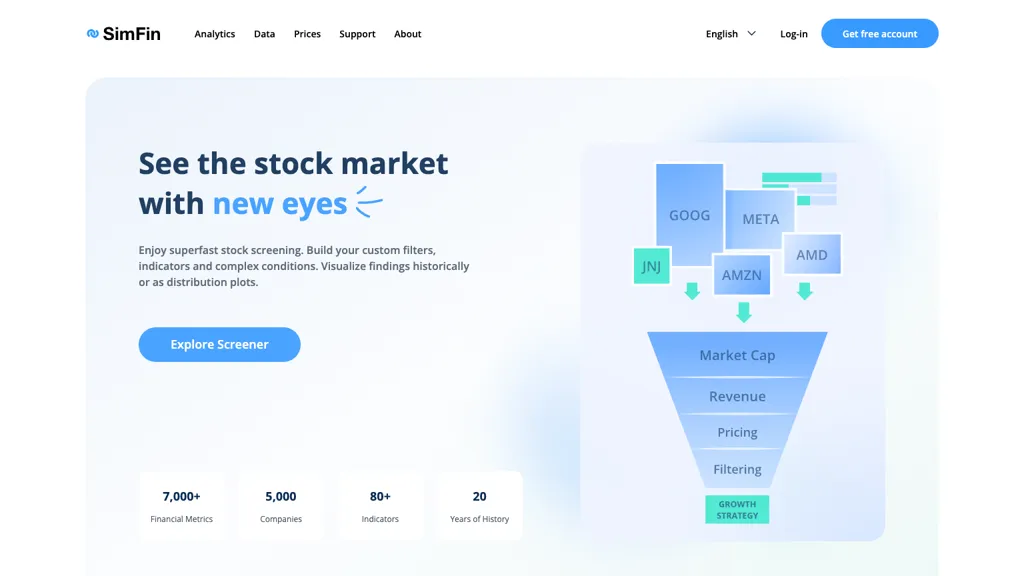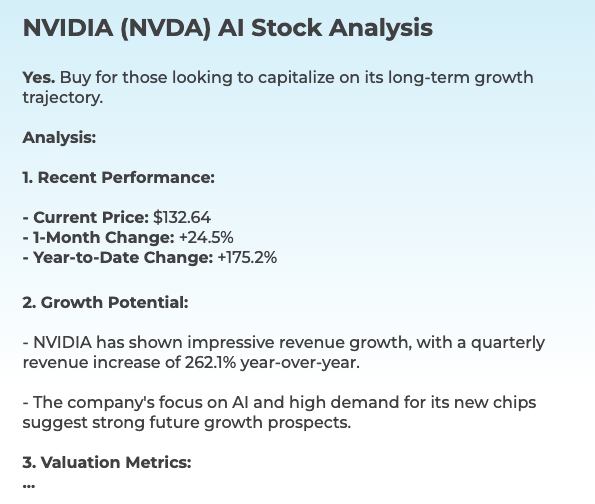Examining the AI and machine learning (ML) models employed by trading and stock prediction platforms is essential to ensure that they provide accurate, reliable and useful insights. A model that is not well-designed or exaggerated can result in inaccurate predictions as well as financial loss. We have compiled our top 10 recommendations for evaluating AI/ML-based platforms.
1. Learn the purpose of the model and its Method of Approach
Cleared objective: Define the model's purpose whether it's for trading at short notice, investing in the long term, sentimental analysis, or a risk management strategy.
Algorithm transparency: Make sure that the platform provides information on the kinds of algorithms employed (e.g., regression or neural networks, decision trees and reinforcement learning).
Customizability: Find out if the model can adapt to your particular strategy of trading or your tolerance to risk.
2. Assess the performance of your model using metrics
Accuracy Verify the model's predictive accuracy. Do not rely solely on this measure however, as it may be inaccurate.
Precision and recall - Evaluate the ability of the model to detect real positives and reduce false positives.
Risk-adjusted returns: Assess whether the model's predictions yield profitable trades following accounting for risk (e.g., Sharpe ratio, Sortino ratio).
3. Check the model's performance by backtesting it
Historical performance: Use historical data to backtest the model and assess how it would have performed under the conditions of the market in the past.
Out-of-sample testing Conduct a test of the model using the data it was not trained with in order to avoid overfitting.
Scenario analyses: Check the performance of your model under various market scenarios (e.g. bull markets, bear markets, high volatility).
4. Be sure to check for any overfitting
Signs of overfitting: Search for models that perform exceptionally well with training data, but poorly on unseen data.
Regularization: Find out if the platform employs regularization techniques, such as L1/L2 or dropouts to avoid excessive fitting.
Cross-validation: Ensure that the platform utilizes cross-validation to test the generalizability of your model.
5. Assess Feature Engineering
Look for features that are relevant.
Selecting features: Ensure that the application chooses characteristics that have statistical significance and do not include irrelevant or redundant data.
Updates to dynamic features: Determine whether the model is adjusting with time to incorporate new features or to changing market conditions.
6. Evaluate Model Explainability
Interpretation: Ensure that the model provides clear explanations of its assumptions (e.g. SHAP values, importance of the features).
Black-box models: Be cautious of systems that employ excessively complicated models (e.g., deep neural networks) without explainability tools.
User-friendly insights: Make sure that the platform gives actionable insight in a format that traders are able to comprehend and use.
7. Assess the Model Adaptability
Changes in the market: Check if the model can adapt to market conditions that change (e.g. changes in regulations, economic shifts or black swan occasions).
Continuous learning: Find out whether the platform is continuously updating the model to incorporate new data. This can boost performance.
Feedback loops. Make sure that your model is incorporating the feedback of users and real-world scenarios in order to improve.
8. Be sure to look for Bias and Fairness
Data bias: Make sure the training data you use is accurate to the market and free of biases.
Model bias: Determine if the platform actively monitors the biases of the model's prediction and mitigates them.
Fairness: Ensure whether the model favors or disfavor specific stocks, trading styles or particular segments.
9. Examine the Computational Effectiveness
Speed: See if the model generates predictions in real time, or with a minimum of delay. This is crucial for traders with high frequency.
Scalability: Find out if a platform can handle several users and massive data sets without affecting performance.
Resource usage : Determine if the model has been optimized to use computational resources effectively (e.g. GPU/TPU).
Review Transparency Accountability
Model documentation - Make sure that the platform contains complete details on the model including its design, structure the training process, its limitations.
Third-party validation: Determine if the model was independently verified or audited by a third person.
Verify whether the system is equipped with a mechanism to identify model errors or failures.
Bonus Tips:
User reviews Conduct user research and conduct case studies to determine the model's performance in real life.
Trial time: You may utilize a demo, trial or a free trial to test the model's predictions and usability.
Support for customers - Ensure that the platform you choose to use is able to provide a robust support service to solve problems related to model or technical issues.
Check these points to evaluate AI and ML stock prediction models to ensure that they are trustworthy and transparent, as well as in line with the trading objectives. See the top rated official statement for blog info including best ai for trading, using ai to trade stocks, AI stocks, trading with ai, ai for stock predictions, AI stock market, chart ai trading assistant, best AI stock trading bot free, ai trading tools, incite and more.

Top 10 Tips For Evaluating The Educational Resources Of AI stock Predicting/Analyzing Trading Platforms
To know how to use, interpret, and make informed decisions about trading Users must evaluate the educational tools made available by AI-driven prediction systems and trading platforms. Here are ten suggestions for assessing the usefulness and effectiveness of these instruments:
1. Complete Tutorials and Guides
TIP: Look whether there are user guides or tutorials for advanced and beginner users.
Why: Clear instructions help users navigate the platform and understand the features of the platform.
2. Webinars and Video Demos
Find video demonstrations, webinars and live training sessions.
Why? Interactive and visually appealing content can help you comprehend complicated concepts.
3. Glossary
Tip: Make sure the platform provides a glossary of AI and financial terms.
What's the reason? It helps users, especially those who are new, understand the terminology used in the platform.
4. Case Studies and Real-World Examples
Tip: Check to see whether the AI platform includes actual case studies or applications of AI models.
Examples of practical use are used to demonstrate the efficiency of the platform, and enable users to interact to its applications.
5. Interactive Learning Tools
Tip - Look for interactive features such as quizzes and sandboxes.
The reason: Interactive tools allow users to practice and test knowledge without risking any real money.
6. Content is regularly updated
Verify that the educational resources are frequently updated to reflect changing regulatory or market trends or new features, and/or changes.
The reason is that outdated information can cause confusion about the platform or its improper usage.
7. Community Forums as well as Assistance and Support
Join active forums and support groups to answer questions or share your insights.
What's the reason? Peer assistance, expert advice and support from peers can help improve learning.
8. Accreditation or Certification Programs
See if there are any certification programs or training courses that are accredited that are offered by the platform.
Why? Recognition of formal education may increase its confidence and inspire users.
9. Accessibility and user-friendliness
Tip: Assess how easily accessible and user-friendly the educational sources are (e.g. accessible via mobile devices, PDFs that can be downloaded).
Reason: The ease of access lets users learn at their own pace.
10. Feedback Mechanism for Educational Content
Tips - Make sure you can give your feedback to the platform on the educational materials.
Why is it important? User feedback is crucial to improve the quality of resources.
Different learning formats are offered.
Be sure that the platform supports different formats for learning that will suit your different types of learning (e.g. audio, text, video).
When you carefully evaluate these features, you can determine if you have access to robust educational resources that can help you make the most of it. View the top rated ai options recommendations for site tips including investing with ai, stocks ai, investing with ai, ai share trading, how to use ai for copyright trading, trading ai tool, free ai tool for stock market india, ai options trading, ai trading tool, investing with ai and more.
